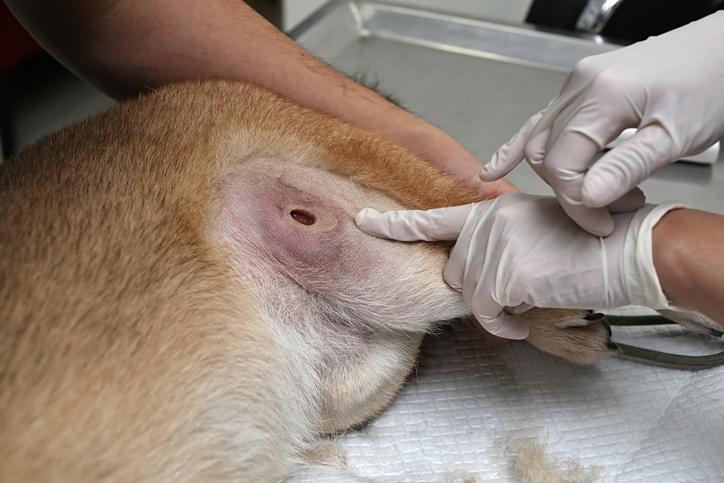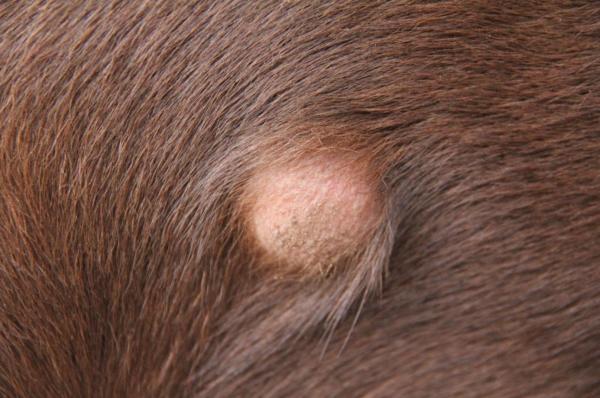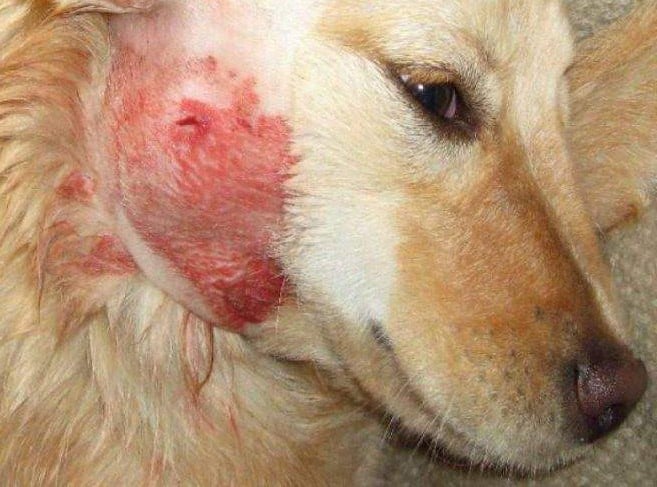Abscess in dogs are pus-filled holes that develop on the skin, in the mouth, in between toes, or within the body cavity. They arise in dogs as abrupt, painful swellings that are either solid or mushy and jelly-like to the touch. Others, on the other hand, form internally or deeper within the tissue and do not show up on the skin’s surface.
It can also burst and exude pus-filled fluid with a foul odor. The swelling might be large or tiny, and it can cause redness and tissue loss if it is under the skin. Some abscesses rupture, allowing foul-smelling material to discharge. Even though the swelling has burst and emptied around the outside of the body, a fever in a dog with an abscess is common.
It can occur for a variety of reasons, but they most commonly occur when a wound gets contaminated with bacteria. When a wound is left untreated, they grow as a result of the bacteria. Sharp item cuts in the mouth, bite wounds from other animals, and ulcerated hairs are all common injuries that become infected with bacteria and result in this infection.
If the skin’s surface is breached, almost everything, such as a bite wound, splinter, or even an insect sting, can cause swelling. When the skin heals over the wound, bacteria become trapped inside, the body’s immune system is stimulated, and an infection pocket forms. Without a noticeable break in the skin, a sterile swelling can form.
Internal abscesses can result from germs or other material entering the body through the digestive tract, urinary tract, respiratory tract, or other entrance points. Abscesses can develop in a variety of tissues and organs. It can form when anal sacs become affected or infected, for example. A liver abscess can occur as a result of widespread blood-borne infection. A tooth root abscess can occur when a tooth is damaged. An infection and consequent abscess in the prostate gland can occur in a sexually intact male dog. A swelling under the skin can develop from a biting trauma.
Table of Contents
Symptoms of Abscess in Dogs
A soft swelling, typically with the outflow of green, yellow, or even crimson pus from the infected region, is an indication of an Abscess In Dogs. They are typically unpleasant, tender, and warm to the touch. A fever, lethargy, loss of appetite, and aversion to moving or having the area touched are all classic symptoms of an Abscess In Dogs.
Here are some Abscess In Dogs symptoms to keep an eye out for:
- At the location, there is pain, inflammation, edema, and redness.
- Excessive licking or chewing of the site
- Appetite loss
- Fever
- Lethargy
- The heat coming from the site
- Hair loss at the affected area
- Black or putrid-smelling skin
- Bleeding or oozing surrounding the wound
Diagnosis of Abscess In Dogs
It’s possible that you won’t discover the problem until your dog is in discomfort and flinches when you touch it, or the abscess drains. The skin stretches and thins as the wound fills with pus, eventually rupturing and possibly drenching the surrounding hair. It is usually diagnosed by your veterinarian based on the symptoms. They may also implant a needle into the lump and take material out to examine if there is an infection.
Treatment of Abscess In Dogs
Treatment is determined by the abscess’s location and the degree of the infection. The majority of abscesses are treated as outpatients rather than in hospitals. The aim is to drain and flush the pus pocket, which can be done surgically or by emptying and cleaning. If the swelling was produced by a foreign object, it is vital that it be eliminated or the swelling will reoccur. Antibiotic medication is an important part of effective treatment for this infection.
The antibiotic used will be determined by the bacteria, and the period of therapy will be determined by both the bacteria and the site. It is also critical to provide enough pain management during abscess therapy. Swelling may also be treated with anti-inflammatory medications. The swelling location should be watched for appropriate healing, and a veterinary inspection will almost certainly be required later.







